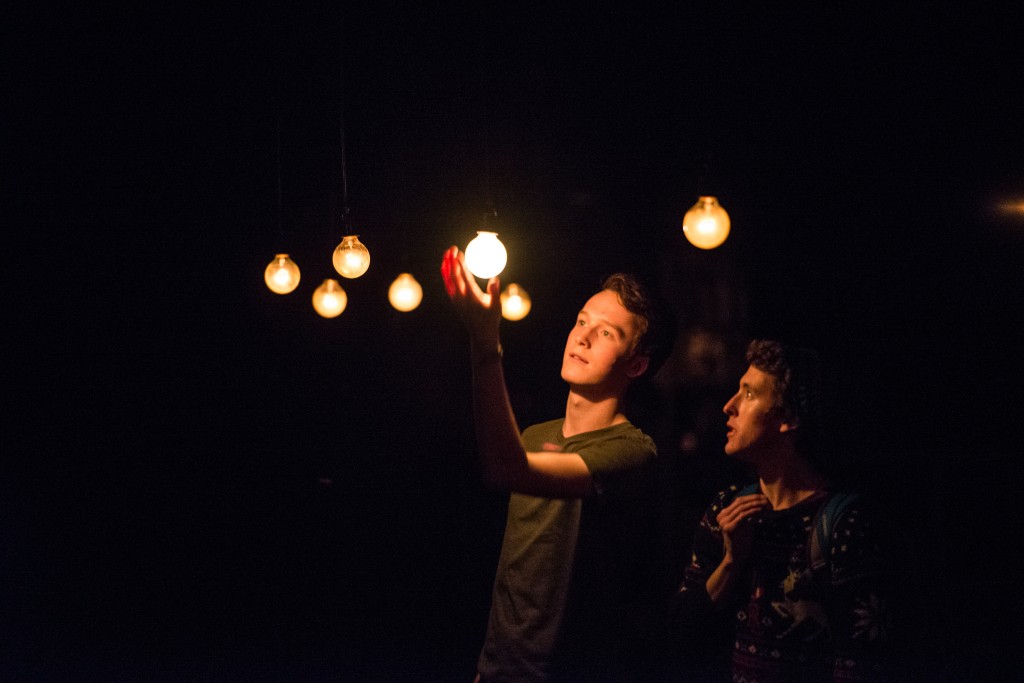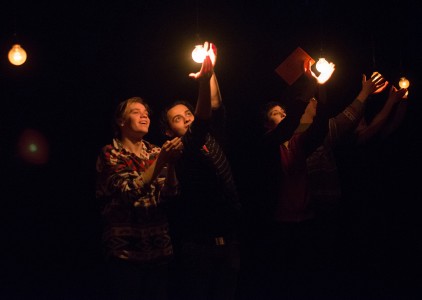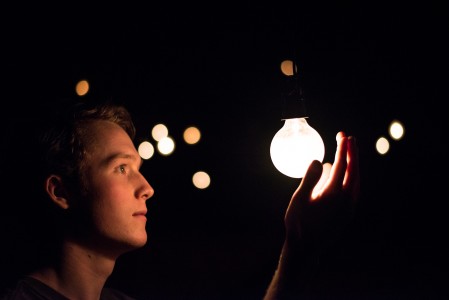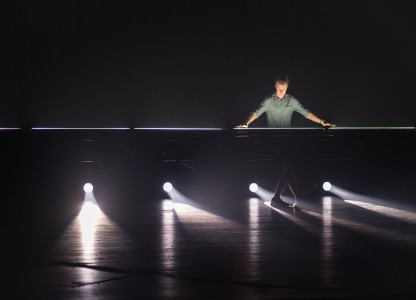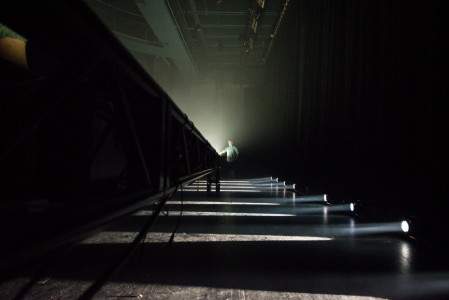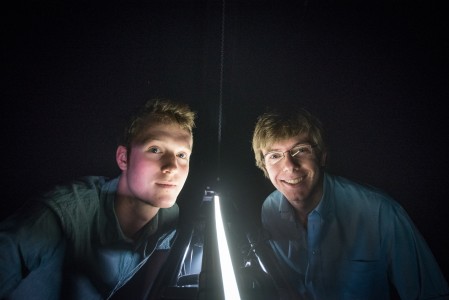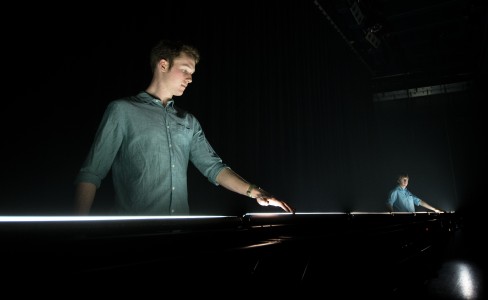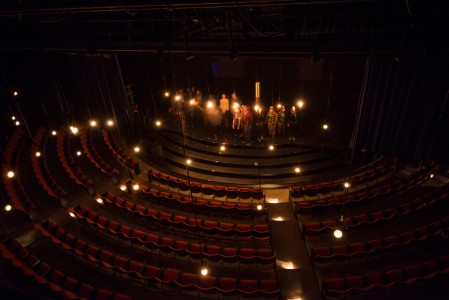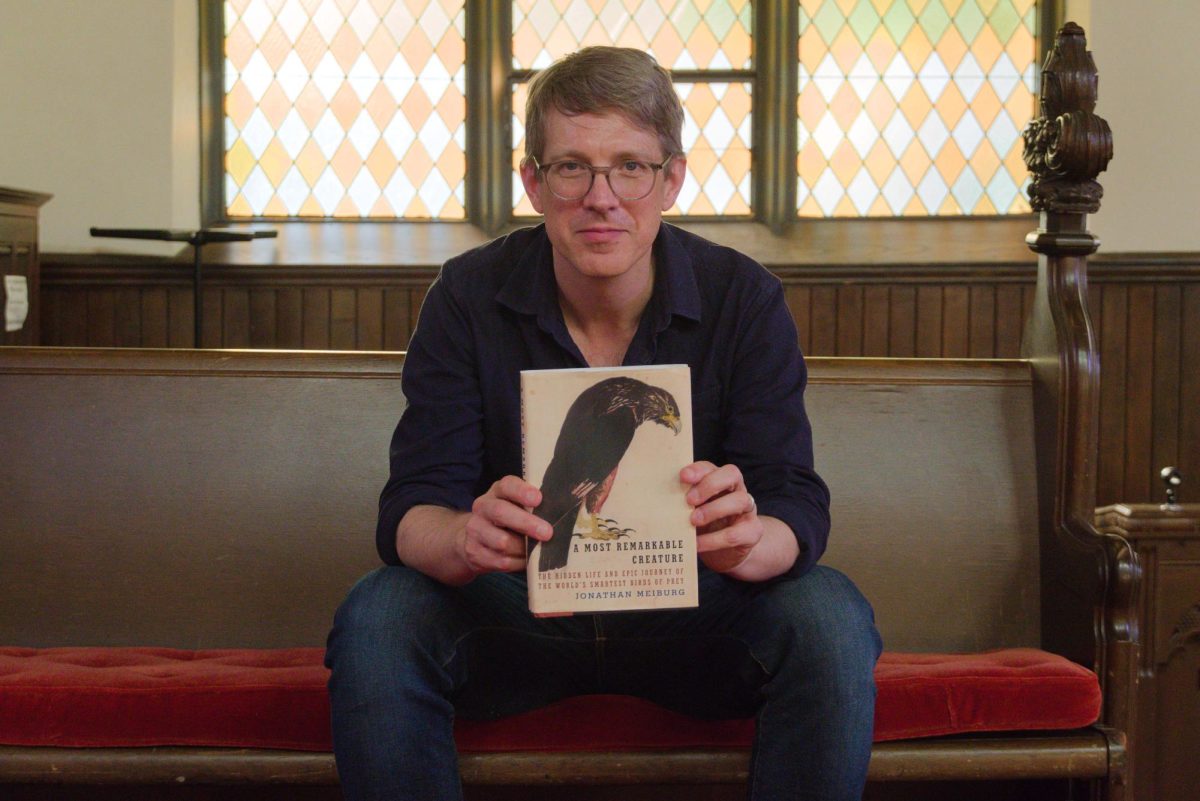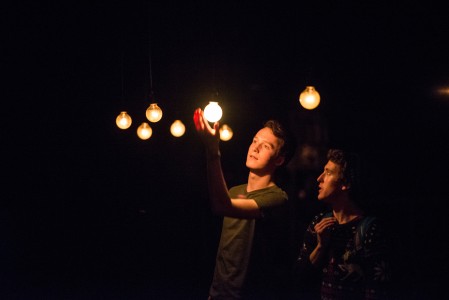
Compelled by a mutual love for the intersection of art, theatre and technology, Ben Doehr ’15 and Caleb Sponheim ’15 have worked all semester on a Mentored Advanced Project (MAP) with Professor Justin Thomas, Theatre, the third part of which will open in Roberts Theatre at the end of next week.
The first installation, entitled “Light,” which appeared in Roberts shortly before spring break, came from the idea of creating a forest of light. While studying in London together last semester, Sponheim and Doehr came up with the idea for the MAP, with the goal of combining their interests in art and technology to “create new experiences.” Although neither are Theatre and Dance majors, their mutual goals were too lofty to be realized in anything less than a long, exploratory project.
“We knew we weren’t going to be able to do the things we wanted to do in a class. There was no way the resources or curriculum would facilitate the things we wanted to do,” Sponheim said. “We throw around words like immersive, emotive, intuitive — but really, we wanted to make magic.”
Upon entering “Light,” audience members were greeted with single light bulbs hanging from the ceiling, spaced across the front of the stage. Sponheim would then explain the magic of the little world: that if one were to put their hand in front of a light bulb—“But you don’t need to touch it!”—a series of other bulbs hanging across the space would light up and little tinkling bells would sound.
After experimenting with the bulbs for a time, Sponheim would offer participants the opportunity to record a short pattern of lights and sounds, which would then play as a loop and could be further added to. Attendees, who numbered far greater than the two originally expected, found the space calming and magical—exactly what Doehr and Sponheim had hoped for.
“Every single time … you would hear an intake of breath. It’s really great to be able to give that to people,” Sponheim said. “The reactions have been more positive than I think we could have ever imagined.”
It was important to the creators that their audience have a sense of control over the environment, and that they had options as to how they experienced the installation. They could explore the space, intentionally create within the space or just sit in the rows of seats and watch.
“Each experience is constructed with different levels of performance,” Sponheim said. “They’re all designed to bring [being a member of an] audience, which is typically a passive experience, into a more active role, but on their own terms.”
Their second installation, “Dark,” was created as the antithesis to “Light,” while still incorporating important elements such as musical elements, interaction with one’s environment and an atmosphere that created a specific, poignant feeling. The intention was to create a space that would react adversely to someone being in it, and would create the feeling that one was being watched.
“Think a haunted house on steroids, but not actually that scary,” Doehr said. “Emotionally, we wanted it to be the opposite experience of ‘Light.’ We wanted it to be a harsh, violent environment.”
In the span of just two weeks, Roberts was transformed into an industrial, imposing space. The bare light bulbs were exchanged for a single line of fluorescent tube lights mounted on gridded iron rods. These lights detected the presence of one’s hand, but created threatening sounds of thunder crashes and bright flashes of lights. The tubes also reacted in relation with one another when multiple participants were experimenting. Using the same technology and materials, Sponheim and Doehr created a completely different world.
“With ‘Light’ you were immediately calmed, so you were more encouraged to explore the stage. With ‘Dark,’ there was more of a transition,” Sponheim said. “When the audience would come in, they would at first be somewhat taken aback, you know, it was loud, it was very intense. But as soon as people realized that they had control over the space … there was this shift and realization that they could manipulate the space in the ways they wanted.”
To create these spaces, Doehr and Sponheim worked with the modular program “Isadora,” which, in its simplest terms, takes nearly any input and turns out almost any selected output. With “Light,” each bulb was isolated within a camera stream and when a change became apparent in the specified section of the frame, the programmed output in the lighting and sound systems was created. Despite what audience members might have expected, the light bulbs did not have sensors or anything attached to them other than a camera.
“[We’re] using very simple tricks to create something very advanced,” Sponheim said. “In that sense it’s kind of like a magic trick … knowing the trick kind of cheapens it a little bit if you’re not prepared for the answer.”
The third installation, as yet untitled, will be vastly different from either of the first two and much more visually diverse, while still maintaining vital elements such as music and interactivity.
“It’s still in its genesis,” Doehr explained. “It will be nothing like the first two—that we can say for sure.”
While the performative space will still be open for hours at a time, like the last two, one very different element will be traditional performances in the space at specific times. This third project involves collaboration with other artists and has also been the most technically challenging, according to its creators.
“We’re doing things that not many people have done in the country,” Sponheim said.
For Sponheim and Doehr, this MAP has been a semester-consuming endeavor full of challenges and a lot of hard work. It is their hope that their work will inspire others to continue to merge art, theatre and technology.
“One thing I do hope is that this will become a trend at Grinnell,” Sponheim said. “There’s so much creative energy here and a lot of inspiration going around. It would be really really cool to see people doing cooler things than us. To take what we’ve made and step it up a whole other level.”
The third installation will be on display in Roberts Theater this Wednesday, May 7, and Thursday, May 8 from 7 p.m. to 9 p.m. and Friday, May 9 from 6 p.m. to 8 p.m.


















































